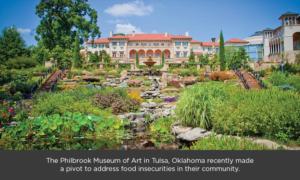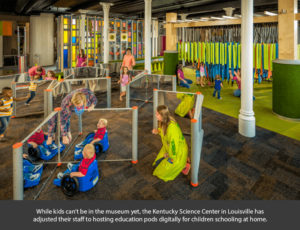Museum & Cultural Institution Transformation, Part 2
- Blog Posts
- White Papers
Over the past several months, we’ve shared our thoughts, observations, prognostications, and best practices on reopening in the wake of COVID. Now that many cultural attractions have been open for limited operations for a few weeks, we’re digging into how it’s going. Who’s surviving? Is anyone thriving? What does re-opening tell us about the cultural attractions landscape long-term?
I spoke with Ray Giang, Vice President, Planning & Advisory Services of MR-ProFun to see if our observations – experiential and operational vs financial and operational – align. The situation is dire for museums: a June 2020 survey of 750 museum directors conducted by the American Alliance of Museums indicated that one-third of these institutions may close permanently as a result of COVID-related economic hardship. Ultimately, while Ray and I each view museums through different lenses, we’re both encouraging our museum clients to look at this in terms of long-term transformation – even as we’re both aware this will be a long, hard road back for those museums who do survive.

Given the overall economic situation in the US, trends in grants and philanthropy, and lessons gleaned from prior economic downturns, we see that surviving and ultimately thriving isn’t a matter of tiny cuts or wholesale departmental eliminations: it’s a matter of really taking a step back and reassessing everything down to the studs.
Both of us see the key as getting back to the mission, and deep digging into what those statements mean in the current climate. Many museums have ‘community’ in their mission – what does a given community need right now? Is it a means to address food insecurity, which the Philbrook Museum of Art in Tulsa and Old Salem Museums & Gardens in Massachusetts took on? Is it hosting education pods for children schooling at home, like the Kentucky Science Center in Louisville and Glazer Children’s Museum in Tampa are doing? And it’s also about more than COVID-related disruption: the Philbrook, for instance, has publicly committed to a multi-point plan of action. Their efforts include a Diversity & Inclusion audit of its board and senior staff and, unlike many museums cutting upcoming exhibits, continuing to plan for From the Limitations of Now, a show featuring black artists reflecting on the Tulsa race massacre and systemic racism.
Choices like these are rooted in an honest assessment of what community, a word so often bandied about, truly means – it has to go beyond the people who have previously felt comfortable, welcome, and represented in museums, and it must include the people inside the museum structure – their staff and volunteers. Right now communities are in crisis, and those museums that really engage in this sometimes humbling work stand to build stronger relationships, affinity, meaning, and ability to fulfill their mission.

Looking at the situation from a more economic perspective, this is also an opportunity to truly assess those legacy projects. No matter how beloved a program is, if the grant funding ran out years ago, it’s time to evaluate where the biggest bang for the buck truly is. Many museums deploy the same events or programming year over year, with few changes – this, too, is a moment in which to really evaluate those programs for efficacy, impact, and experience. On a grander scale, we’re seeing a larger industry conversation take place, questioning the traditional funding models for museums that leave them operating on a razor’s edge, dependent on a dated model of philanthropy, and vulnerable to shifting political winds affecting local, state, and federal budgets.
Museums have to get through this moment – but they have to get through it with their soul and bank accounts intact. Overwhelming though the process of visioning may be for institutions right now, Ray and I both see tremendous opportunity to re-invent museums into places and spaces which are fundamentally in service to their communities, places of transformation, equitable in their work and their experiences, and financially sound for the future.
Related Posts
Embracing AI
- Blog Posts
Whether we like it as a tool or fear that...
Introducing Harry Potter: A Forbidden Forest Experience
- Blog Posts
- News
Follow a forest light trail and discover illuminated moments from the...